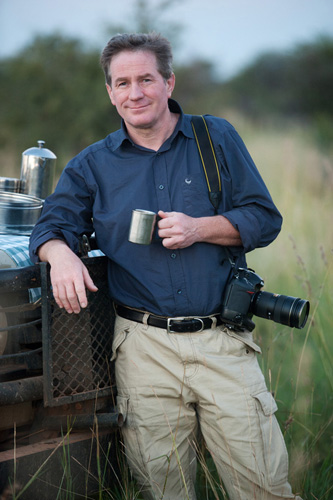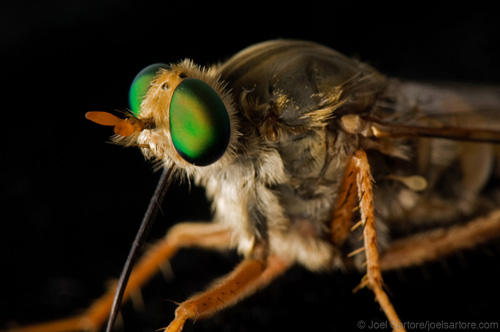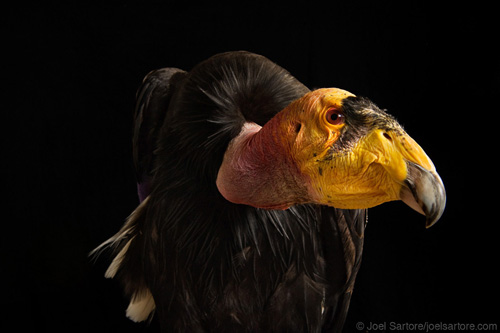
As a National Geographic photographer, I often focus on animals that are out of the spotlight. It could be a rare stream fish, a tiny plant or even an insect. I choose things that are in trouble, often at the hand of man, in order to help them out; my photos are often the only national attention these things will ever get. So, I’m really on a mission to let the world know about “the least among us” before it’s too late.
A couple years ago, I did a story for NGM on the Endangered Species Act. From that came a book called Rare: Portraits of America’s Endangered Species. While all the images in the book have a story behind them, two stand out in particular.
The first concerns our only federally endangered fly. What good is a fly, you ask? If you eat fruits and vegetables, and have heard that bees are in steep decline these days, you would know the answer already: flies are very important pollinators. Besides, if we’re pushing even flies to extinction, what does that say about the health of everything else we share the planet with? When we save endangered species, we’re actually saving ourselves.
Logistically, this fly picture was quite hard to get. The animal is quite rare. In fact, it took 4 1/2 months just to get a federal permit for a biologist to catch one so I could photograph it. Once we got our permit, I waited for the call that some had been spotted on one of the last vacant lots where they live in southern California and then drove a mobile studio from my home in Nebraska all the way out to Los Angeles. We were allowed to catch only one, by the way, so if it got away during the shoot, too bad. Neither the biologist nor I slept a wink the night before. Despite our nervousness, we got our fly pictures.
The second image that stands out for me is of an animal that’d I’d known of and wanted to meet since I was a little boy; the California condor.
I’d read about the condor back in the 1970’s while in grade school. The largest flying bird in North America, it hovered close to extinction for decades. At its lowest, it numbered fewer that 20 individuals. It was the ultimate endangered species.
Through captive breeding, biologists have now pulled this bird back from the brink. Though still quite rare, today it numbers more than 300 individuals, with many flying free again in California and the Desert Southwest. Talk about life and death, this was high drama indeed.
Getting access to such a high-profile species wasn’t easy though. I’d been doing studio portraits at dozens of zoos around the country for many years when I got a call from a friend at the Phoenix Zoo. Seems a condor had flown into the Navajo Bridge and had broken its wrist, meaning it would be unable to fly again and would either be kept as a breeder or an educational bird. It was being kept in a recovery pen there for a few weeks with its broken wing wrapped, so if I could get there, the zoo folks said I could photograph it. I went right away.
I set up a couple of softboxes and a piece of black velvet in the back of its pen and spent about 20 minutes with him. The bird was enormous and ancient looking. During the shoot, the condor looked this way and that, confident, not scared, and not really that interested in me or the camera in my hands. But he did give me one moment, a few seconds where he looked into the camera lens and stared intensely. Perhaps he simply saw his reflection, but that look, and the fact the bird had a beautifully-colored head that’s really unusual, made this one of the most popular photos in Rare.
For me, the opportunity to photograph the bird was both a thrill and a great life experience — I’d finally gotten an audience with the most famous of all endangered species, the bird that I’d been thinking about literally since childhood. It doesn’t get any better than that.
You can see more of Joel’s work at JoelSartore.com, follow him on Twitter, find him on Facebook, and keep up with him on his blog. Signed copies of Joel’s book, Rare: Portraits of America’s Endangered Species, are available here or by calling 402-474-1006.





Awesome Joel, macro photography is one type I have not ventured into much. The condor is definately CAKB! Thanks for sharing.
What does CAKB means?
Urban dictionary says: definition by CAKB
1. Highest Pistivity
1. When you’re extremely, extremely pissed off.
2. When you feel like you want to crush flowers.
3. When you’re so angry you feel like strangling your cat, but can’t because it’s so cute.
Brear post
I meant great… Damn ipad
Excellent Read. I can see why the Condor photo was a book favorite.
Oh and thanks Scott. The page loaded extremely quick today.
You guys rock
Mike
Great post, Joel. Love the condor pic (I thought they WERE extinct!).
–John
At one point, they did capture every condor from the wild, so in a sense, they were “Extinct” in the wild, until they were re-introduced later on after they bred the numbers more in captivity.
Thanks Joel for sharing your insights! I’ve been an admirer of your work in NG for some time. I really love the condor photo too. :)
Makes you feel very tiny in this big world. Very nice post. Thanks for sharing your story.
Joel, I became a huge fan of yours after seeing an exhibit of yours at the museum where I work. Beautiful images. Thank you for being a voice of the voiceless.
Great post – I love looking at the photos in National Geographic!
I have one question – what does CAKB stand for?
I am extremely impressed with your photography and your deed to life on this earth. Like you said, you are their voice.
Thanks for what you’ve done, from this earthly animal species…
I will order one of your books.
Tim Surratt
Joel, the work you do is so important and the message vital. If we destroy our one and only home and all its wonderful creatures, then what?
Thanks for sharing your beautiful images and keen insight.
Hate to be the first critic here but black seems like the last color I would choose to put behind the condor. All the detail of the bird is getting lost. I understand that the head is the most important part but I’m losing the rest of the bird. Are there other shots from the shoot that show scale? I really can’t get a sense of the worlds “largest” bird.
Hi,
What a nice surprise to see you here. YOUR photo brings back such wonderful memories of the week several years ago that my sister-in-law and I spent in Santa Fe being taught by you. We both learned so much and you made learning so much fun! I’ve followed and loved your work in NG ever since, and admire your dedication in using your talent to bring attention to endangered and fragile species. The images and stories here are beautiful and compelling! P.S. Still waiting for you to come to Utah!
That California condor image rocks man!!!